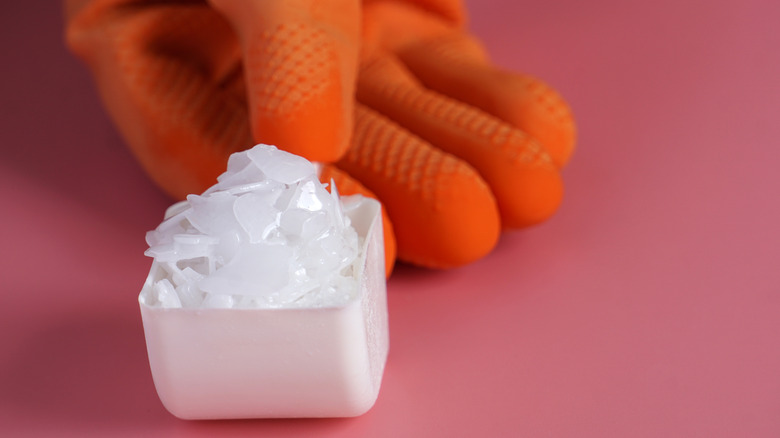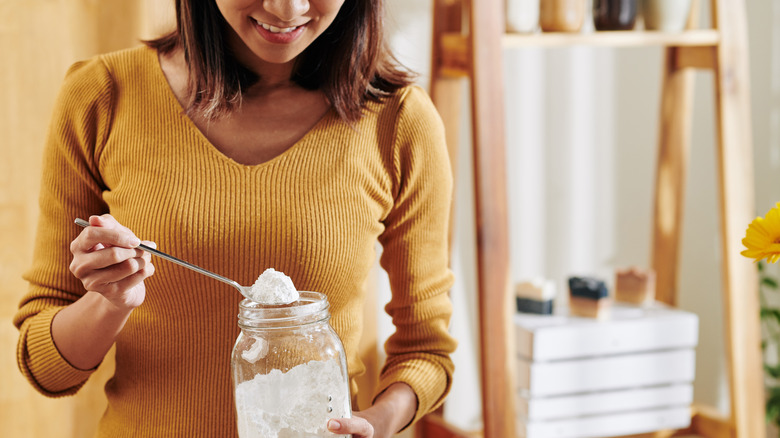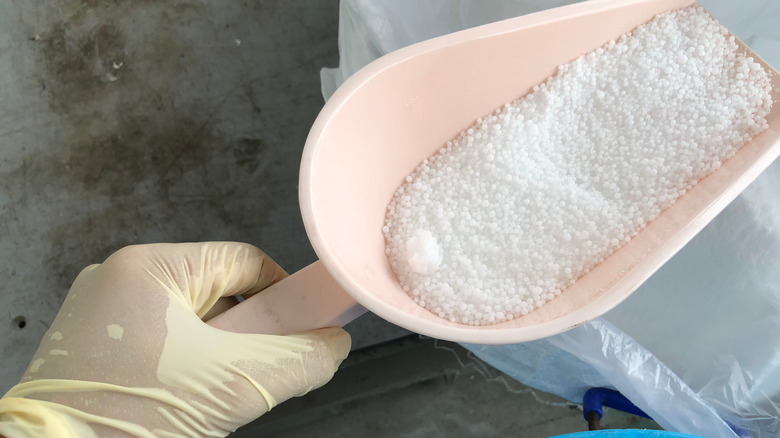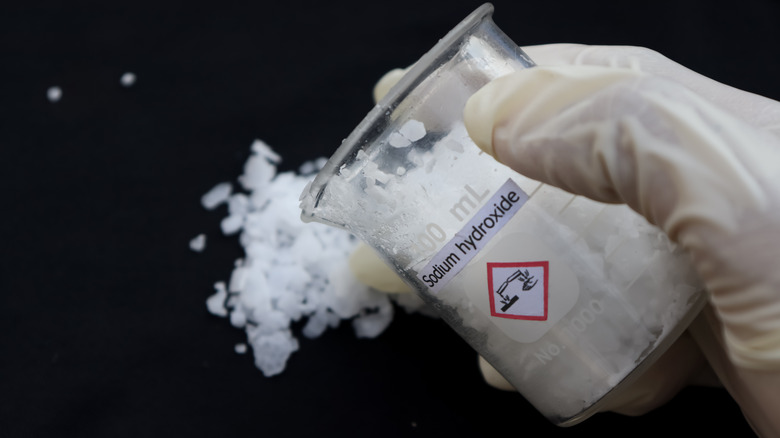The Right Way To Dispose Of Lye
There is no doubt that lye is a handy household product. There are plenty of ways to use it in homes, such as unclogging drains or DIY soap making. However, lye can be quite dangerous if handled wrongly. Before getting into details about the dangers of lye, it is vital to understand what lye is in the first place. Better referred to as caustic soda, lye is a metal hydroxide that is very soluble in water. To be specific, lye is another name for sodium hydroxide, and from basic chemistry, we understand that it falls pretty high up the PH scale, at the 14 mark, making it a pretty strong base, Edens Garden notes.
Sodium hydroxide can cause serious injuries when exposed to the skin. However, according to the Tennessee Department of Health, the severity of the injury is determined by the level of concentration and the length of exposure, among plenty other factors. Nonetheless, sodium hydroxide is known to cause severe burns to the exposed areas. It is also worth mentioning that while lye might be an ingredient necessary for making soap, once the soap-making process is complete, it is no longer harmful to your skin.
Common uses of lye
Despite the danger it can pose, sodium hydroxide is quite useful in a lot of ways. Here is a rundown of three of them, as explained by Noah Chemicals. One of the most common usages of lye is clearing clogged drains. It is quite impressive how sodium hydroxide breaks down the oil and hair build-up in the pipes. Sodium hydroxide is also used in making soaps and other cleaning agents for your home. And while this substance in its raw form is often hazardous to humans, you will be pleasantly surprised to find out that it is a common compound in some of the regular medicine we use, for instance, painkillers and anticoagulants.
A small amount of sodium hydroxide is also used to neutralize the acidity of beauty products. A neutral beauty product is good for the skin and scalp as well. While lye is useful to have around the house, we should also appreciate that it is dangerous if handled carelessly. Because it is categorized as household hazardous waste, you cannot dispose of it anywhere, so be sure to observe all the safety measures whenever you are handling lye.
Handling lye safely
Now that we have already established that lye can be extremely dangerous when it comes into contact with the skin, let's look at how to safely handle lye at home, as explained by Hoegger. While lye is dangerous, this should not stop you from using it to unclog your toilets whenever necessary. However, before handling it, you must put on some protective gear to limit your exposure to this chemical. Be sure to wear long rubber gloves, eye protection goggles that fit your face, a face mask, and an overcoat. Lye should also be kept out of the reach of children at all times. When not in use, store sodium hydroxide in a strong-enough plastic container with a tight seal. It is equally important to label the container appropriately. Also, remember that sodium hydroxide is quite reactive when in contact with other substances; therefore, avoid metallic holders.
When working with this chemical at home, it is also essential to keep your pets away, preferably in crates, to keep both yourself and your furry friend safe. Finally, you need to be aware of the emergency protocols in the event of an accident. How-To Dispose details that if sodium hydroxide gets in contact with your skin, you need to wash it off immediately with cold water. If you breathe in the toxic fumes, rush outside away from the contamination and breathe in the fresh air. You should seek medical attention after such incidents.
Ways of disposing of lye
Sodium hydroxide or lye falls in the household hazardous waste category that requires special disposal. Let's dig into how you can dispose of lye, as explained by How-To Dispose. If you have more caustic soda than you need, give it to someone who will make good use of it. Bring it to a DIY soap manufacturer, a plumber, an engineer, or a shopkeeper to resell it. If you cannot find anyone to give the chemical to, reaching out to your area's nearest hazardous waste disposal unit is best.
You can also neutralize the substance. Neutralizing lye is a delicate process that should be done with a lot of care; a weak option like acetic acid is ideal for this. Only neutralize the lye in an open space and in small amounts to reduce the amount of heat that will generate. A stainless steel or pyrex glass container is recommended for this process because neither is reactive and will not melt when exposed to the heat. An alternative to this process is to dilute the soda with a measured amount of water but keep in mind to mix the lye with the water and not the other way around. This process is also exothermic and is likely to produce a lot of heat. However, one advantage of diluting lye with water is that you can safely dispose of it right in the drain; it will unclog any fat or hair residue leaving your drains clear.



